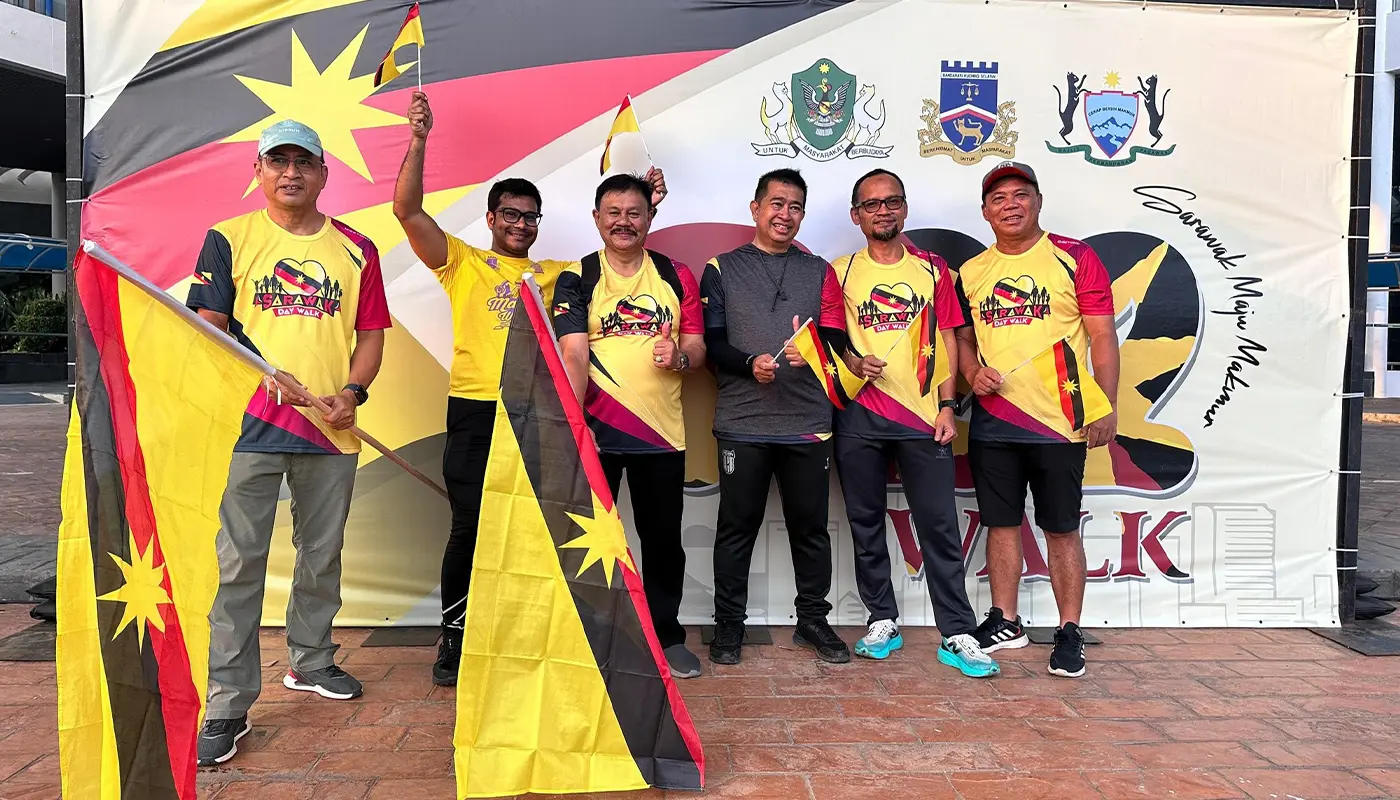KUCHING – Over 1,000 spirited participants took to the streets of Kuching early Monday morning for the annual Sarawak Day Walk 2025, held in celebration of Sarawak Day. The vibrant event served as a powerful tribute to Sarawak’s journey to self-governance and its enduring identity within the Federation of Malaysia.
Flag-waving participants, many dressed in outfits inspired by the Sarawak flag, began the four-kilometre walk at 6:30am from the Kuching South City Council (MBKS) grounds. The walk concluded at Dataran Ibu Pertiwi around 8:20am, where the crowd gathered for a symbolic flag-raising ceremony conducted with solemn respect.
Among those walking in solidarity were MBKS Mayor Dato Wee Hong Seng, Kuching North City Hall (DBKU) Mayor Dato Hilmy Othman, and Padawan Municipal Council (MPP) Chairman Tan Kai. Their participation highlighted the strong unity among Kuching’s local authorities and their shared commitment to fostering patriotism and inclusivity.
The Sarawak Day Walk 2025 drew participants from MBKS, DBKU, MPP, various government agencies, and local community groups, underscoring the collaborative spirit of the event.
Dato Hilmy, speaking after the walk, described it as a “manifestation of solidarity and cooperation” among the city’s three main local councils. He emphasised the importance of Sarawak Day not only as a commemoration of historical milestones but as a source of collective pride and a guidepost for future progress.
“Sarawak Day is more than a date in history; it is a celebration of our identity and an opportunity to reaffirm our vision for a united and sustainable Sarawak,” he said.
He also assured the public that local authorities remain steadfast in their mission to organise programmes that foster urban sustainability, unity, and civic pride.
Sarawak Day, celebrated annually on July 22, marks the day Sarawak achieved self-governance from British colonial rule in 1963, ahead of the formation of Malaysia. The Sarawak Day Walk 2025, also known as the 722 Walk, stands as a meaningful reminder of the state’s past struggles, present unity, and future aspirations.




